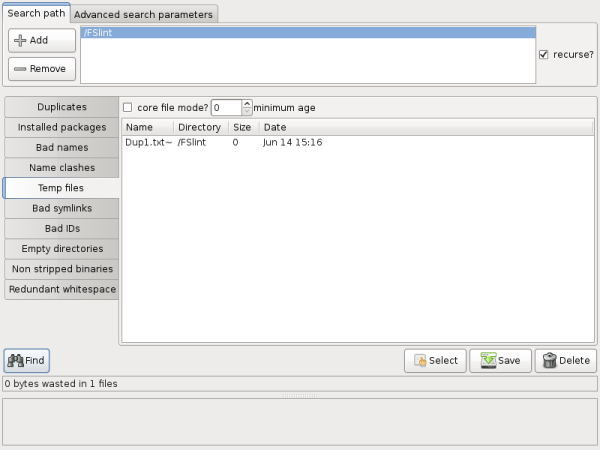Temp Files
Temporary files can eat away at a your hard disk space without you ever noticing. Temporary files are typically recognized and hidden from the user's sight by the OS. Temporary files can be created when editing files, when running some programs, or when a program wishes to report and save a problem. Removing these temporary files can free up valuable space, and FSlint can find these files so that they can be purged.
Graphical Interface

It is possible to specify a minimum age to find only files modified in the last X number of days. A minimum age of 0 is all temporary files.
When a program exits or is terminated prematurely, the program can leave behind files known as core files or dump files for debugging purposes. The core files are generally named "core.#####" where # can represent any number 0-9. Many Linux distributions have this feature disabled. To check if core files are enabled on your Linux system, run `ulimit -c` from the command line. A value of 0 is disabled. In FSlint the check box "core file mode?" enables a more thorough search for these core files.
Command Line Interface
The command line interface to this utility is 'findtf'. This utility will be found in the installation directory of fslint.
$ /usr/share/fslint/fslint/findtf --help find Temporary Files. Usage: findtf [-c] [--age=days] [[-r] [-f] paths(s) ...] If -c specified then a more thorough search is done for (and only for) core files, and more information is printed about them. If --age=days specified then the temporary files must be over that number of "days" old before being reported. For e.g. findtf -c --age=4 only reports core files over 4 days old. If no path(s) specified then the current directory is assumed.





